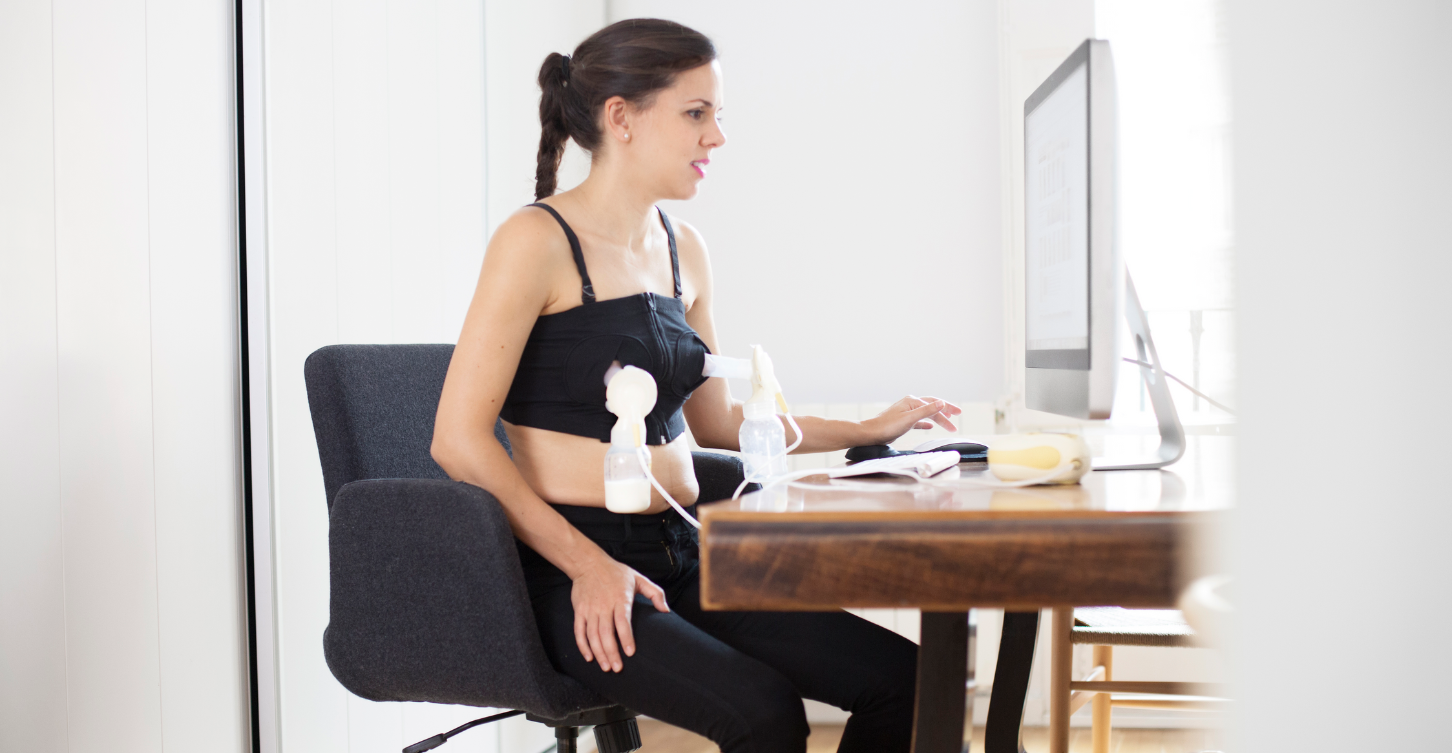Breast Pumps: How to Choose the Right One
April 26, 2023
By: Sherry Kendrick
Categories: Healthy Living, Maternity
New moms have many choices to make. One of those is selecting a breast pump. It’s important to choose the pump that’s right for your unique needs. Picking the wrong pump can cause breast health issues, decreased milk supply and other problems.
There are a lot of choices for breast pumps, and it can become overwhelming when you start looking at all your options. Many moms ask friends or family members for recommendations, others go to mom blogs or online reviews and some even ask a professional like a certified lactation consultant.
Getting feedback from others is great; however, keep in mind that all moms and postpartum situations are different. What works for one mom might not be best for you. What worked with your first or second child might not be what you need this go round.
As the manager of Tallahassee Memorial’s La Belle Breastfeeding Boutique, the exclusive provider of breast pumps for Capital Health Plan members and your one-stop shop for breastfeeding items, I help moms select the right breast pump every day.
Here are some simple steps to finding the best breast pump for you.
1. Start with Insurance
The best way to start is by finding out which breast pump your insurance provider covers. If you do not have insurance or don’t plan on obtaining a pump through your insurance, skip to step two.
If you do want to use insurance for your breast pump, begin by contacting your insurance company and asking how to obtain your pump. They will likely direct you to a website or location where you can get your breast pump and explain the process of getting it covered.
2. Understand the Lingo
While looking for your new breast pump, you may come across some unfamiliar terms. Here are some of the most common phrases you may encounter:
- Single electric: A single electric breast pump has one motor and one flange – the funnel part of the pump that makes contact with your breast – to suction milk from just one breast at a time.
- Double electric: A double electric breast pump allows you to pump from both breasts at once. These are considered more efficient than single pumps.
- Hands-free: A hands-free pump is exactly what it sounds like – it doesn’t require your hands! Most pumps can become hands-free with the use of a pumping bra, but they are not very discreet – the milk bottles may stick out from the bra.
- Wearable: All wearable pumps are hands-free, but not all hands-free pumps are wearable. A pump that is truly wearable can be worn under the clothing without being noticeable – you can pump in public without anyone knowing.
- Battery-operated: These pumps do not need to be plugged in during use. They use a battery that needs to be replaced or recharged.
- Electric: Electric breast pumps use a cord plugged into an electrical outlet or battery to power a motorized pump that suctions the milk from the breast.
- Manual: Manual breast pumps are used on one breast at a time and are operated by hand. There is no power source attached to these pumps.
- Hospital-grade: Hospital-grade pumps allow for the maximum amount of breast milk production possible. Lactation consultants may recommend a hospital-grade pump to help increase your milk supply. These pumps tend to be bigger and more powerful than personal-use pumps and are often offered on a rental basis. Be mindful of pumps that are advertised as “hospital-grade” – this has many different meanings to different people. True hospital-grade pumps are safe for use by multiple users. Some companies label their pumps hospital grade due to the strength and durability of the motor, but they are not meant to be used by multiple people. While hospital-grade pumps are effective, they are often bulky and are not as portable as off-the-shelf pumps.
- Single-user: Unlike hospital-grade pumps, these are designed to only be used by one person – even if they are closed system pumps.
- Closed system: A closed-system breast pump has a backflow barrier between the pump parts and the pump’s tubing that prevents the milk from splashing into those parts.
- Open system: An open-system breast pump does not have a barrier between the pump parts and the pumps tubing, meaning milk can get into these parts, including the motor. Open-system pumps need to be properly sterilized and dried completely after each use.
3. Explore Your Options
Research the pros and cons of the different types of pumps available: single pump versus double pump, battery operated versus electric, open versus closed system, and so on.
Once you narrow down what you’re looking for in a pump, it’ll be easier to find the one right for you. If you want a double electric, closed system pump with a rechargeable battery, you can easily cross the single electric, manual and open system pumps off your list. Then, consider if you’d like a hands-free or wearable pump. Remember, most pumps can be hands-free with the purchase of a pumping bra – we sell those at La Belle too!
4. Consider Size and Weight
Look at the size and weight of the breast pumps. Some are no bigger than the palm of your hand, while others are closer to the size of a dinner plate. If you want something lightweight and easily portable, go for a smaller pump. If you will always be pumping at home or at the office and you don’t have to tote your pump from place to place, a larger pump may be great for you.
You should also think about the tote, backpack, or diaper bag you will be carrying the pump around in. You’ll want to make sure your pump and all pump parts fit in the bag you want to carry.
Don’t forget to consider the size of the motor – it’s not always dependent on the size of the pump.
5. Compare Motor Size
Breast pump motors are measured in both millimeter of mercury (mmHg) and cycles per minute (cpm). You’ll want to make note of what each pump offers.
The mmHg will show the pressure that is generated – the suction. The cpm will tell you how often the motor turns – the speed. Good quality pumps will typically have 250 or more mmHg and at least 38 cpm. Anything less may not be adequate in helping you maintain a good milk supply or may cause pain and irritation to your breast.
6. Think About How Many Pumps You Need
Many moms use multiple pumps. Some have rental or hospital-grade pumps and personal pumps. Some moms use a manual hand pump and an electric pump. Others have a pump for home and a pump for work. All these combinations are fine; just make sure that together they meet your pumping needs.
7. Consider: Do You Need a Wearable Pump?
Wearable pumps are trendy right now. Many moms have a wearable pump and a personal pump, but not everyone needs a wearable pump. Many moms will come to me and say, “I’m a nurse,” “I’m a student,” “I’m a hairdresser,” and “I need a wearable pump.” I totally understand! However, just because a pump is wearable doesn’t mean it’ll meet all your pumping needs.
Some wearable pumps have only a small motor attached to the breast cup that is not capable of emptying the breast completely. Other wearable pumps have a motor that goes in your pocket – these are usually stronger and better able to empty the breast.
If you decide to get a wearable pump, it shouldn’t be your only breast pump unless the motor meets the criteria explained above (250+ mmHg and 38+ cpm). If you need to use a wearable pump, make sure you have a second high-quality breast pump to alternate pumping sessions, so you do not compromise your milk supply.
8. Pay Attention to Details
When selecting a pump, make sure you analyze the duration of the pump’s warranty, its features, attachments, and accessories. These things will play a role in helping you decide which pump is best for you.
Warranties
In my many years of selling, renting, and using breast pumps, I have found that if a manufacturer has a very limited warranty, chances are that pump is not going to last. You’ll want to look for pumps that are covered under warranty for at least a year – two years or more is best.
Features
Features on pumps are very important. Breast pump companies like to use a lot of attractive words in their descriptions. Pay attention to every detail that is important to you.
If you are going to be pumping in a common area, you may want to go with “whisper” or “ultra-quiet.”
Look for backflow protection to prevent milk from getting into your pump’s tubing. If you want memory settings, night lights or touchscreens, look for those features as well.
Accessories
Most breast pumps come with all the attachments needed to pump. Compare which attachment pieces are offered with each pump. Some may come with extra attachments that keep you from having to purchase spares.
Some come with coolers and tote bags, while others are just the pump and attachments. Not all pumps come with accessories – some come with an external car charger or battery pack. If you need a car charger or battery pack, you may want to look at a pump that has a rechargeable battery that is built in. This is one less thing to keep up with, and these batteries automatically charge when the pump is plugged in.
9. Compare Pricing
Expensive pumps aren’t always better. There are some great pumps available at lower price points. However, don’t cut corners to cut costs. If you go with a less expensive pump that does not have adequate mmHg or cpm, it could cost you more in the long run if you encounter breast health issues, decreased milk supply or having to purchase or rent a different pump.
Some insurance companies offer pumps available “at no charge” and some for an upcharge. An upcharge does not mean an upgrade in the pump. It simply means the manufacturer charges the retailer more money for that pump, so the retailer must collect additional fees to offset the cost. Again, don’t assume that more money means it’s a better pump.
La Belle Breastfeeding Boutique
Located within TMH’s Alexander D. Brickler, MD Women’s Pavilion, the La Belle Breastfeeding Boutique offers a wide range of breast pumps and breastfeeding supplies to set you up for success. Our offerings include:
- Breast pumps, accessories and attachments
- Nursing and pumping bras
- Breast milk storage containers
- Certified bra fitting
- Herbal supplements and essential oils
- Nipple and breast care products
- Nursing pillows
- Pregnancy and postpartum belly bands
- Pregnancy and postpartum body care products
- Specialty feeding supplies
- And more!
If you are delivering at Tallahassee Memorial and you have Capital Health Plan insurance, you can pick up your breast pump from our La Belle Breastfeeding Boutique, or have it delivered to your room, at the time of your delivery.
If you have Capital Health Plan insurance and are delivering elsewhere, you can pick up your pump no earlier than one month before your due date at La Belle inside our Alexander D. Brickler, MD Women’s Pavilion. Call ahead to schedule a time to visit us at 850-431-4920. We accept cash, check, Visa, MasterCard, Discover and American Express.
To browse our selection of pumps available, visit TMH.ORG/BreastPumps.






